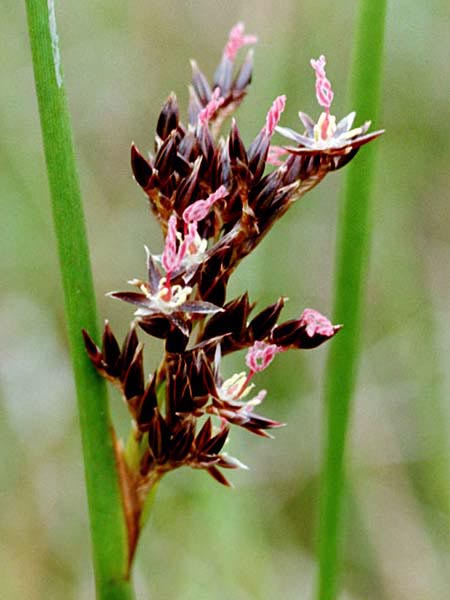Baltic Rush

Common Name(s):
Baltic Rush
Wire Rush
Wiregrass
Scientific Name:
Juncus arcticus Willd. ssp. littoralis (Engelm.) Hultén
Scientific Name Synonyms:
Juncus balticus Willd.
Symbol:
JUBA
Description:
Life Span: Perennial
Origin: Native
Season: Cool
Growth Characteristics: A wire-like rush, growing up to 3 feet tall, with numerous rhizomes. Stems are smooth, dark green, round to oval, and pithy inside. Rhizomes are dark brown to black, tough and woody, often deeply anchored. Reproduces by rhizomes and seed.
Seedhead: Flowers are small (less than ¼ inch), dark brown, and are borne in a clustered panicle up to 2 ½ inches long. Flowers are found on the side of the stem, not at the terminal end of the stem.
Leaves: Leaves are basal, bladeless sheaths.
Ecological Adaptions:
Baltic rush is the most common of the rushes found in the Intermountain West. It occurs most abundantly at low to mid elevations, but can occasionally be found in the subalpine spruce-fir zone. It grows along streams, in small wet depressions and swales, in moist meadows, around springs, and as a band along the banks of streams, sloughs, lakes and reservoirs.
Soils: It can be found on a variety of soils, ranging from silt and clay loams to coarser sandy substrates. Growth is most vigorous on neutral or slightly acidic soils. Large expanses can also be found in saline and alkaline meadows and flats.
Associated Species: Nebraska sedge, timothy, and redtop. In disturbed areas, it can be found with foxtail barley.
Uses and Management:
Baltic rush is a fair to poor forage source for all grazing animals. Its stems are so tough that they pull free from the rootstocks when grazed by livestock, especially cattle. When young, palatability is usually good for cattle and fairly good for sheep and wild herbivores. Its strong rhizomes and fibrous roots make it grazing-resistant and excellent for erosion control where water flows through drainage ways.
Blackfoot Indians used the roots for making a brown dye, and other tribes used its stems to make baskets and mats

